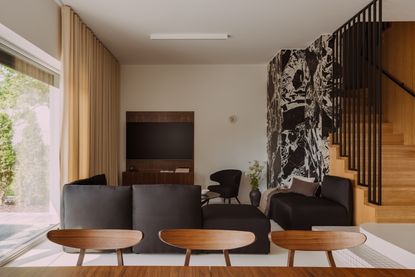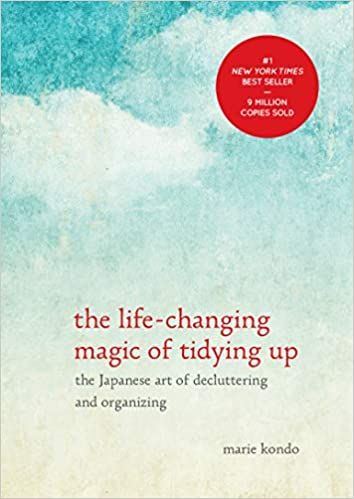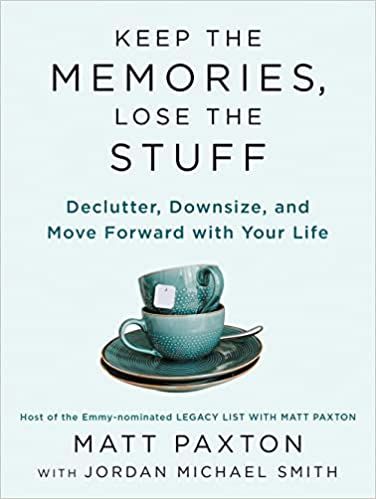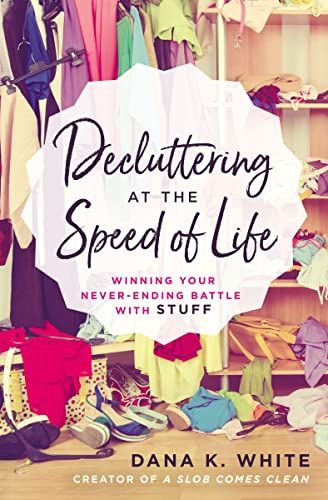This organizer's three-second decluttering rule is the best trick we've found if you suffer from 'decision fatigue'
If you find yourself held up by decision-making when decluttering your home, this expert-approved technique promises quick results


In order to effectively declutter your space, you need to set some ground rules. Without committing to a few tried and tested tricks you're likely to lose focus on the task at hand or easily become overwhelmed, especially if you have a lot of stuff to sort through. That said, it's also important to be kind to yourself in the process else you'll end up losing sight of your goals. That's why I love this three-second decluttering rule. It's a quick and efficient way to declutter your home without being too harsh on yourself.
This simple rule is by far the kindest principle I've come across, but it's still incredibly useful when it comes to decluttering a room. The best part about it is that it doesn't force you to throw away anything that you find yourself second-guessing - and let's face it, we've all been there. Be it a random gadget you think might be useful one day (even if it's only sat in a drawer until now) or a decorative item with sentimental value, it's not always easy to part with our belongings. In fact, this experience is so universal that professional home organizers even have their own term for it - 'analysis paralysis'.
You might be wondering how you actually manage to declutter a space if you rely on a rule that allows you to keep stuff. Well, this rule generally teaches that it's better to throw away just one thing than it is to throw away nothing. We spoke with a professional declutterer who hails the effects of this rule to learn more.

Lilith is an expert at following news and trends across the world of interior design. A firm believer that a tidy home is a happy one, she's committed to helping readers organize and declutter their spaces through sharing practical tips and guides. For this piece, she spoke with the professional declutterer who came up with the three second decluttering rule
What is the three second decluttering rule?

Put simply, the three-second rule puts a quick time limit on your decision-making when it comes to throwing out an item. If you hesitate for more than three seconds, then this rule gives you permission to keep it.
It's a method used by professional organizer Kayleen Kelly who specializes in chronic clutter and ADHD. 'My declutter three-second rule allows you to declutter quickly and confidently without analysis paralysis, decision fatigue, or regret,' she explains. 'You declutter one category at a time and make a decision on each item (for example, all of your coffee mugs). It’s either a "yes, you keep" or "no, it goes". If you hesitate for more than three seconds it’s an automatic keep.'
According to Kayleen, this decluttering tip helps you to make quick decisions from your gut and prevents you from overthinking the process. 'It also removes the fear of making the “wrong” decision,' she adds. 'It's the best way to eliminate what I call the ”fluff” - the stuff that you don’t care about but takes up lots of space.'
If, like me, you find yourself plagued by indecisiveness during decluttering, you might worry that this rule will just result in keeping pretty much everything you hoped to get rid of. But Kayleen is quick to note that you don't have to throw away loads of stuff on your first try for this method to be effective. 'After the first round, if you still feel you didn’t let go of enough, that’s when you go back for another round to make more definitive decisions and explore your hesitations,' she says. 'It works so well because you actually see results quickly which motivates you to move forward.'
The easiest way to put this into practice is with a three-second interval timer. It might seem overwhelming at first, but it's best to treat the challenge like a fun game. It’s a technique Kayleen created in her nine years as a professional home organizer and she swears by its ability to yield positive results.
What situations does the three-second rule work best in?

In general, this rule can be applied in any space or category of things within your home, but it's best reserved for those objects you find yourself mulling over when decluttering. Perhaps you're a clothes hoarder and your closet needs some attention, or maybe you feel sentimentally attached to the huge collection of mugs in your kitchen cupboard. Whatever your decluttering hamartia, this rule is sure to be your savior.
That said, Kayleen says it's important to categorize your items before you employ the three-second rule. 'It’s crucial that you see everything you have so you can compare them, realize how much you actually own, and make informed decisions,' she explains. For example, if you're dedicating time to closet organization, start by laying out all the pairs of jeans you own before moving on to sweaters, T-shirts, and dresses.
Emotionally speaking, this rule is most effective for those of us who are particularly sentimental. 'A lot of fear and doubt comes up when we think of decluttering,' Kayleen says. 'Our brains instantly think of all the things we don't want to give away, but this rule should initially be applied to the things we do want to give away. Anything identified as sentimental is the absolute last category we address. Once we’ve gotten through the less emotional items you’d be shocked to realize how little is truly sentimental.'
Why is the rule especially helpful for neurodivergent people?
For those of us who are neurodivergent, the three-second rule can be an extremely positive approach to decluttering. It's quick, kind, and keeps you focussed on the task which is why it's so useful for people who often struggle when it comes to organizing the home.
'As a neurodivergent person myself creating this technique came naturally,' notes Kayleen. 'The ADHD brain is unique and there are four pillars of motivation for us: novelty, interest, competition, and pressure. My declutter three-second rule provides a new approach, a speed challenge, and a sense of urgency (without punishment) all of which spike dopamine once you see the progress and results.'
If your recent decluttering efforts have been unsuccessful, try again and give this technique a try. We're certain that you'll have far more positive results the second (third, or fourth) time around. Just remember to be kind to yourself.

If you really want to kick the clutter for good, this book might be for you. Written by the Queen of organization, Marie Kondo, this book lays out the core principles of The KonMari Method, the revolutionary category-by-category system that promises effective decluttering results.

Probably the biggest thing holding you back from decluttering is your sentimental attachment. With empathy, expertise, and humor, Keep the Memories, Lose the Stuff, by Matt Paxton helps you to let go of what all the stuff that no longer serves you, helping you to live in the present moment

If a decluttered home seems like a distant reality, this book by Dana White will help you get the job done. The decluttering expert identifies the emotional challenges that make it difficult to part with stuff we own, and provides workable solutions, like the six month rule, to break through and see noticeable results.
Be The First To Know
The Livingetc newsletter is your shortcut to the now and the next in home design. Subscribe today to receive a stunning free 200-page book of the best homes from around the world.

Lilith Hudson is the News Editor at Livingetc, and an expert at decoding trends and reporting on them as they happen. Writing news, features, and explainers for our digital platform, she's the go-to person for all the latest micro-trends, interior hacks, and color inspiration you need in your home. Lilith discovered a love for lifestyle journalism during her BA in English and Philosophy at the University of Nottingham where she spent more time writing for her student magazine than she did studying. After graduating, she decided to take things a step further and now holds an MA in Magazine Journalism from City, University of London, with previous experience at the Saturday Times Magazine, Evening Standard, DJ Mag, and The Simple Things Magazine. At weekends you'll find her renovating a tiny one-up, one-down annex next to her Dad's holiday cottage in the Derbyshire dales where she applies all the latest design ideas she's picked up through the week.
-
 These 12 Best Table Lamps for Your Desk — Perfect Glows for a Creative Home Office
These 12 Best Table Lamps for Your Desk — Perfect Glows for a Creative Home OfficeThe best table lamps for your desk is have a soft, targeted glow. Elevate your WFH set-up with these stylish picks endorsed by Style Editor Brigid Kennedy
By Brigid Kennedy Published
-
 The Nespresso VertuoPlus is 30% Off for President's Day, and it's Kim Kardashian's Coffee Maker of Choice
The Nespresso VertuoPlus is 30% Off for President's Day, and it's Kim Kardashian's Coffee Maker of ChoiceThis sleek and stylish coffee maker was spotted in Kim's home bar, and you can currently save $60 if you buy yours from Amazon
By Lilith Hudson Published

